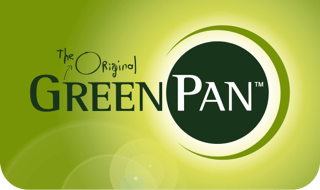
What Is Induction Cooking & How Does It Work?
Once upon a time, any discussion about stovetops involved a simple choice between two options: gas or electric.
More recently, advances in technology, environmental awareness, high energy prices and a host of other factors have collided to bring induction cooking to rapid prominence in the cooking world.
If you have yet to encounter an induction stovetop, you may be wondering what all the fuss is about and how induction cooking actually works. The short answer is that induction cooktops use electromagnetic fields to create oscillating currents within compatible cookware, resulting in direct and efficient heat transfer.
Sound complicated? Don't stress!
We're here to break the science down into clear, simple terms anyone can understand. This comprehensive guide will unveil the magic of induction cookware without needing an advanced degree in physics. Whether you're a seasoned cook or a curious beginner, we'll equip you with the knowledge you need to unlock the full potential of induction cookware and elevate your culinary adventures.
How Does Induction Cooking Work?
Instead of relying on open flames or hot coils, Induction cooktops use the power of electromagnetism to create heat in your cookware rather than applying heat to your cookware1. Sound like science fiction? It’s actually somewhat more straightforward than it sounds.
To explain, let’s take a look beneath the deceptively simple ceramic glass surface of an induction cooktop. Nestled just below that smooth, glossy surface, you’ll find a tightly wound copper coil that looks a little bit like a vinyl record and a pot holder that had a lovechild.
Running an electrical current through this coil creates a strong electromagnetic field. When you place a compatible pot or pan on the cooktop, this field induces (hence the name) an electric current within the pot itself. The energy created through this magnetic magic causes the metal molecules in the cookware to vibrate thousands of times per second, immediately generating heat within the pot or pan. In this way, the induction mechanism essentially transforms your cookware into a self-contained heating element2. Ingenious!
What Cookware Can Be Used On An Induction Cooktop?
Now that you understand the basics of induction technology, it's time to talk cookware. The first and most important thing to know is that not all pots and pans are compatible with induction cooktops. To understand why, we need to jump back into the physics lab and take another look at electromagnetism.
For an induction stovetop’s electromagnetic field generator to work, your pot or pan must contain a magnetised material that conducts electricity. Don’t stress—it’s WAY easier than it sounds. Metals such as iron, magnetic stainless steel, and nickel are perfect for induction. However, if your cookware is aluminium, copper, glass, or ceramic, it may not be induction-compatible.
However, not all hope is lost! Most modern cookware comprises a sandwich of multiple layers of different materials in the base. So, even if your cookware falls into the wrong category, it may still work fine. GreenPan’s cookware is the perfect example of this. Many brands of ceramic cookware are not compatible with induction. However, a growing number of GreenPan products include our proprietary MagnetoTM technology—a state-of-the-art material containing copper-reinforced ferromagnetic particles built into the base. This provides extra strength and durability and ensures that any product with a MagnetoTM base can be used on an induction stovetop.
How to Tell If Pots & Pans Are Induction Compatible
As we mentioned, having the wrong kind of pan may make it incompatible with induction. However, due to the complex way that modern cookware is constructed, it’s also possible that your favourite aluminium or stainless steel pan might just have a layer of material that will salvage it from the scrap heap!
So, is the cookware you have at home induction compatible? Here’s a fun little experiment you can run: Grab a magnet from your fridge and place it on the base of your cookware. If it sticks firmly, congratulations! Your cookware is induction-friendly. It’s that easy!
If there is no magnetic bond, or it is very weak, the bad news is that you’ll need to get shopping for new induction cookware before you can use your shiny new stove.
The Pros and Cons of Induction Cooking
With energy prices spiraling ever-upwards and the future of household gas looking a little uncertain in light of Victoria's move to phase out the use of gas3, induction cooking is increasingly looking like the way of the future. Before you make the switch, it's essential to understand both the advantages and limitations of this innovative technology. Here's a breakdown of the key pros and cons to help you make an informed decision:
Pros of Induction Cooking
- Instant Temperature Control: Unlike traditional methods that require radiant heat from electrical elements or flames, induction cooktops create energy directly within the cookware, resulting in lightning-fast heating and cooling. Water boils significantly faster, and temperature adjustments are almost instantaneous, giving you unparalleled control over heat levels for precision cooking4.
- Superior Energy Efficiency: With traditional cooktops, a significant amount of heat energy inevitably escapes around the sides of your pots and pans. If you’ve ever sweltered in your kitchen on a scorching summer day, you’ll know what we mean. By contrast, because the heat is generated inside the pot when using an induction cooktop, virtually all the energy is utilised for cooking your culinary creations. These energy savings make induction the most environmentally friendly choice and may even help you save on your power bills.
- Safety First: Induction cooktops are hands down the safest way to cook. The cooktop surface remains cool to the touch during and after use as only the cookware heats up. While it may feel counterintuitive, even at the maximum temperature setting, you can put your hand directly onto the cooking surface with zero risk. This eliminates the chance of accidental burns, making it a safer option, especially for households with children or pets.
- Easy Cleaning: Induction cooktops are clear winners in the cleaning stakes. There are no grates or elements to remove or awkward recesses, just a smooth, flat glass surface that is a dream to wipe clean from any spill. Best of all, because the surface never heats up, there is no baked-on grime or charcoal requiring an industrial-sized supply of elbow grease to remove. The savings in time and effort are a huge bonus.
- No Toxic Fumes: A growing body of research suggests that the fumes resulting from burning gas may be unhealthy for humans and animals. Nasties such as benzene and nitrogen dioxide are released when gas burns. These gases may accumulate in kitchens without adequate ventilation and potentially pose long-term health risks for your family and pets5.
Cons of Induction Cooking
- Significant upfront investment: Induction cooktops are typically more expensive than traditional models. While the energy cost savings will usually accrue over time, in most cases there will be sizeable up-front cost involved with purchasing your induction stovetop.
- Potentially bothersome sounds: Some induction cookware may produce a faint pinging or humming sound when used on an induction cooktop. This is a perfectly normal result of the interaction between the electromagnetic field and the cookware's base. Cheaper pans with less sturdy construction tend to cause more noise than sturdier, higher-quality pans, so choosing the right induction-compatible cookware can minimise any impact.
- Limited compatibility with cookware: As mentioned above, some traditional cookware made from materials such as aluminium, copper, or standard stainless steel won't interact with the electromagnetic field. If your cookware repertoire is limited to these items, you may need to invest in new cookware specifically designed for induction cooking. However, the growing popularity of induction technology means there is a broader variety of induction-compatible options available than ever before.
While some considerations must be made for these potential downsides, the benefits of induction cooking are undeniable and, in most cases, will drastically outweigh any negatives. It offers a faster, safer, and more energy-efficient cooking experience.

What Is The Best Cookware For Induction Cooking?
Most reputable brands of cookware now offer induction-friendly options. When choosing the right cookware to use with your induction system, your best bet is to avoid cheaper, low-quality options. Most of these bargain items are not suitable for induction. If they are, their flimsy construction will likely cause significant vibration and, therefore, noise when used.
So, what is the best cookware for induction? Well, we might be just a little bit biased, but there are many reasons why GreenPan induction-compatible cookware may be right for you:
- Advanced Technology: GreenPan's Magneto™ technology has been specially designed for optimal performance on induction cooktops. Our incredible development team spent years ensuring that Magneto™ is the leading technology on the market.
- Durability: GreenPan's cookware is crafted with high-quality materials and features our signature healthy ceramic non-stick coating. Unlike other induction cookware that can warp over time, Magneto™’s incredibly sturdy construction means it will hold its shape for the pan's lifetime.
- Non-Toxic: Like all GreenPan products, our induction cookware range is free from toxic materials such as PFAS, PFOA and more. You can rest easy knowing you’re using the healthiest, most eco-friendly products on the market.
- Variety for Every Chef: We offer a wide range of induction-compatible cookware, from frying pans and saucepans to Dutch ovens and woks. Whether you're a seasoned home cook or a culinary novice, you'll find the perfect tools for any cooking adventure.
- Supreme Versatility: While regular frying pans cannot be used on an induction stove, GreenPan’s induction cookware can be used on any other cooktop. Indeed, our Magneto™ induction base is custom-designed for optimised performance on all stovetops.
- Colours to Suit Any Decor: Who said cookware has to be bland? GreenPan puts the flair into cookware with a fun variety of fashion-forward colours to match your unique style.
With the winning combination of GreenPan's innovative technology and the many advantages of induction cooking, you can confidently create delicious meals while enjoying a safe and energy-efficient cooking environment. So gather your induction-friendly cookware, fire up that fancy magnetic stove, and put the pan back into panache!
End Notes
1 Solar Victoria: https://www.solar.vic.gov.au/switching-to-induction-cooktop
2 Explain That Stuff, Aug 2023: https://www.explainthatstuff.com/induction-cooktops.html
3 Victorian Department of Transport & Planning: https://www.planning.vic.gov.au/guides-and-resources/strategies-and-initiatives/victorias-gas-substitution-roadmap
4 The Washington Post, Oct 2022: https://www.washingtonpost.com/food/2022/10/04/induction-cooktops-buying-using/
5 University of NSW, Feb 2023: https://www.unsw.edu.au/newsroom/news/2023/02/a-heated-debate--how-safe-are-gas-stoves--






